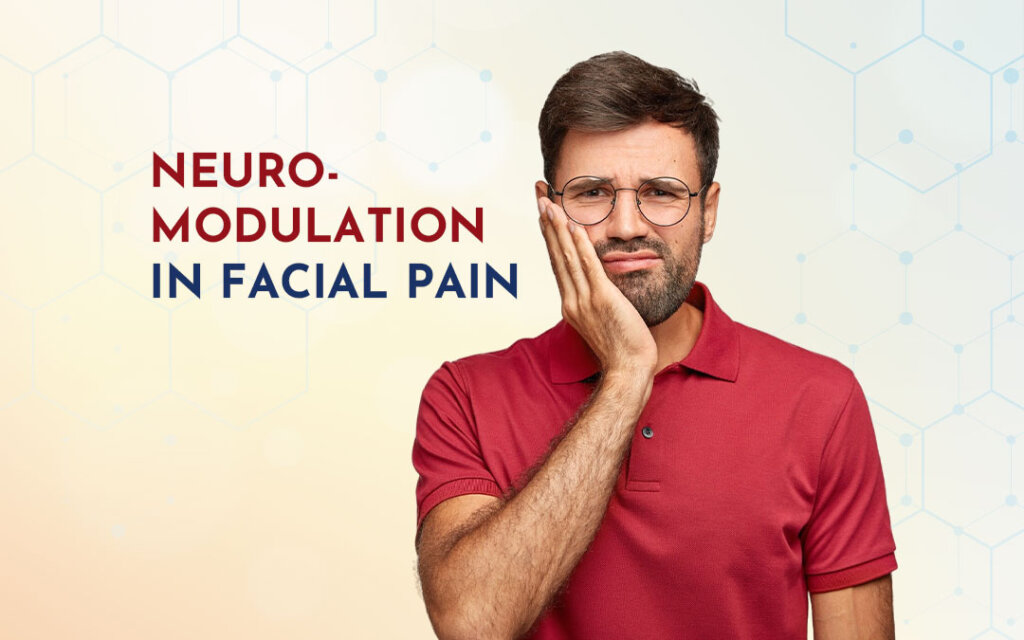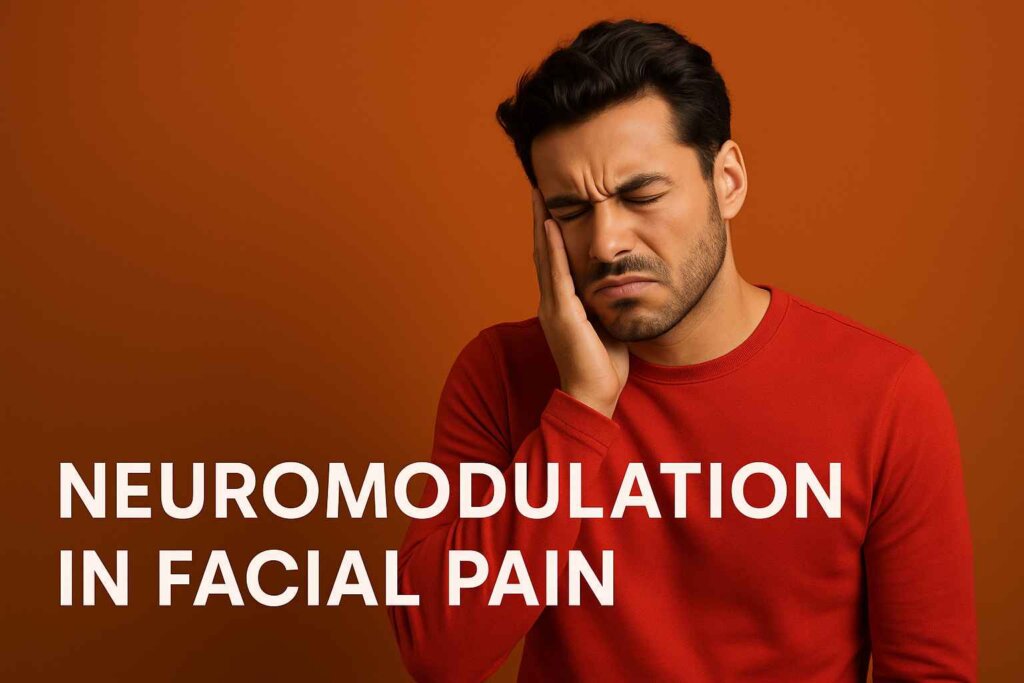
Home » NEUROMODULATION IN FACIAL PAIN

Facial pain is debilitating. It can whether its chronic or acute, be wearying and exhausting. They drastically affect a person’s quality of life.
The causes are diverse. They range from Trigeminal Neuralgia to post-traumatic neuropathies. Often, they are too complex. The treatment process as a result becomes a daunting challenge.
Conventional therapies can provide relief to an extent. Like Medications and Physical Therapy, as well as Surgical Interventions. But they are not always effective. This is especially in the case of patients with refractory pain.
In recent years, Neuromodulation has emerged in the treatment of facial pain, as a groundbreaking technique. It offers with its ability to alter nerve activity with electrical or chemical stimulation, hope for patients not finding success with traditional methods. Medical experts term it as a promising alternative or adjunctive therapy.
It indicates targeted delivery of electrical stimulation or pharmaceutical agents to specific neurological sites in the body. The logic behind this process is to alter the nerve activity. Also, restore balance to dysfunctional neural circuits. That is circuits involved in the pain perception.
Neuromodulation techniques can be invasive. Techniques like implanted spinal cord or cranial nerve stimulators. Else they can be non-invasive. Techniques like Transcranial Magnetic Stimulation (TMS), or Transcutaneous Electrical Nerve Stimulation (TENS).
It has proven to successfully treat certain conditions. Conditions like Chronic Back Pain and Parkinson’s disease. Now, it is being used to manage Neuropathic Facial Pain. That otherwise is known to be difficult to treat.
Facial Pain is not easy to treat. It can be difficult.
The main reason is its complex innervation. That involves cranial nerves. This is especially for Trigeminal Nerve, which possesses motor and sensory components. Any kind of misfiring in these nerves can be damaging. It can result in intense, shock-like pain. It is this pain that is with standard medications alone, difficult to treat.

Chronic Facial Pain often causes psychological comorbidities. They also cause psychological issues. That is issues like anxiety and depression. Both of which can further complicate the treatment process.
It hampers the transmission of pain signals to the brain. This can be achieved by,
Neuromodulation in the context of facial pain aims at specific targeting. They target the specific nerves or brain regions involved in the pain pathway. Especially nerves like Trigeminal Nerve or the occipital nerve. They target in certain cases, central areas like the Thalamus and Motor Cortex.
It’s among the most direct approaches in facial pain. That is known to effectively treat Trigeminal Neuralgia and Atypical Facial Pain.
Implanted device is used/ They help to send electrical pulses to the nerve. They work to inhibit pain signaling.
Main advantages include targeted therapy and long-term relief. It also has its challenges. They include surgical risks, device maintenance, and treatment cost.
Occipital Nerves lies at the back of the head. They have connections with the trigeminal system. It’s used to treat Occipital Neuralgia and Chronic Migraine.
ONS can manage migraine-related facial pain and cluster headaches. It reduces the frequency and intensity of attacks.
There are also risks associated with it. Like device migration and infection.
It’s used to treat central facial pain. That is, where the pain originates in the brain itself.
MCS involves placement of electrodes over the motor cortex through a craniotomy. However, this technique still remains under investigation. Nevertheless, it has shown promising results in refractory neuropathic pain.
Indications for using it includes, stroke pain and central facial pain. It has been found to be highly effective in reducing pain in selected patients.
The only drawback is it is highly invasive and requires brain mapping.
It stimulates nerve cells in the brain with magnetic fields.
As a non-invasive procedure, it has a lot of potential. Like for instance, in treating migraine and neuropathic facial pain. However, it is still in early stages of facial pain treatment.
Indications for using it include migraine and depression-linked facial pain.
Major benefits include no need for surgery or outpatient procedure. The only drawback is it requires repeated sessions and is known to provide temporary relief.
Traditionally it was used to treat back pain. It still is sued. However, it can also be effective in facial pain treatment. By stimulating the cervical spinal cord, especially conditions that involve widespread neuropathic pain.
Indications for its use include Complex Regional Syndrome (CRPS), and Multi-Nerve Involvement. So far, it is been found to be effective in well-selected patients. The only drawback is it is invasive and expensive.

Neuromodulation like any medical intervention is not without risks.
Certain common complications include,
Additionally, not all patients are ideal candidates. Careful patient selection and comprehensive diagnostics with multidisciplinary evaluation are critical to maximize its success.
The future is bright. With ongoing research exploring,
Additionally, improved imaging and mapping technologies are also being explored. They have helped to facilitate more precise targeting of pain pathways, and reducing the invasiveness of procedures. The outcomes have been found to be impressive.
Facial pain remains in the realm of chronic pain disorders, among the most complex and distressing conditions. Traditional treatments have often fallen short, leaving patients in persistent discomfort.
Neuromodulation represents a paradigm shift, in how these cases are approached. It offers through cutting-edge technology, hope and relief. This can pave the way for more effective and long-lasting options that is less invasive.
Join our mailing list to get updates about our services and procedures or any events and discounts.

WhatsApp us